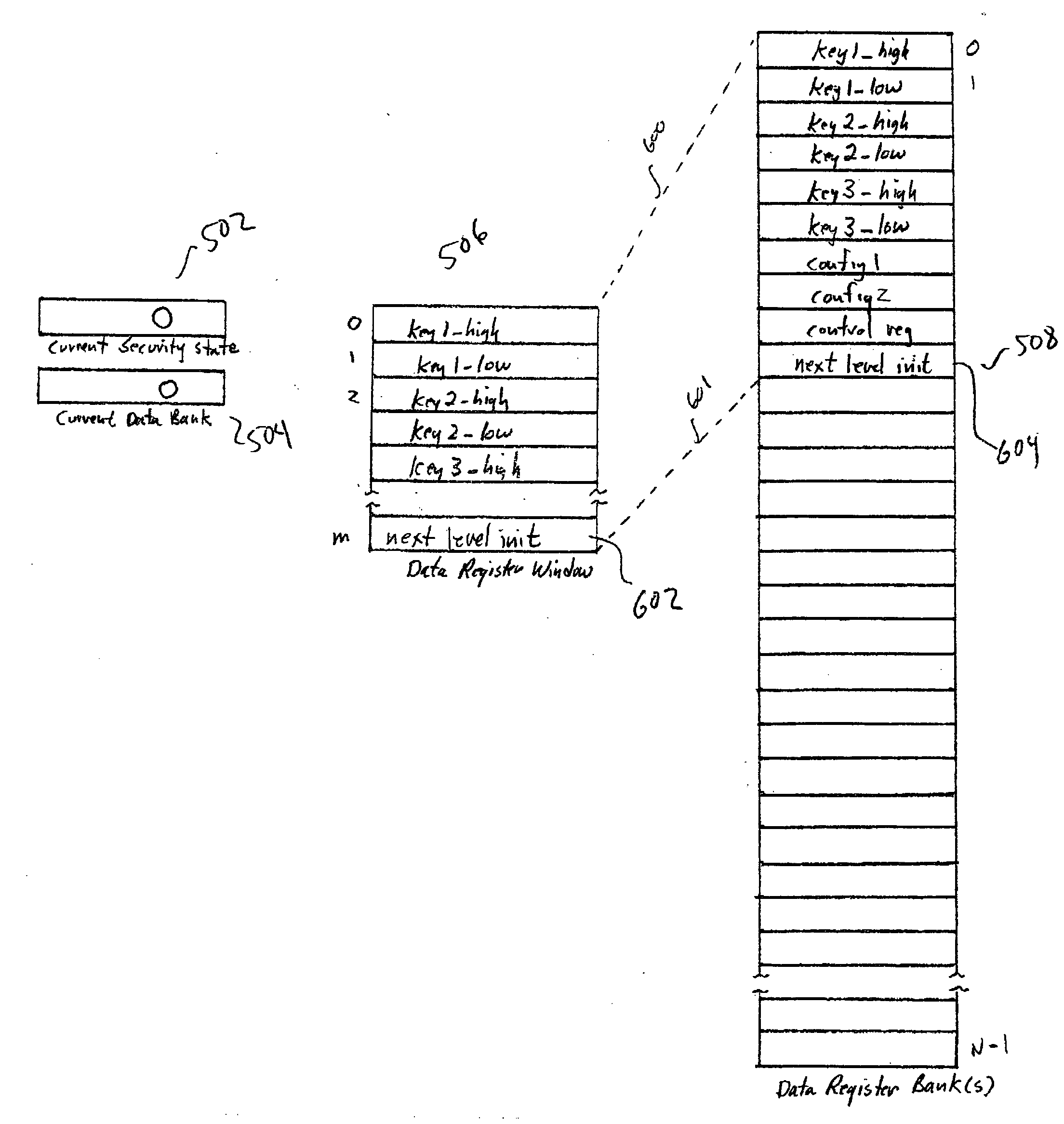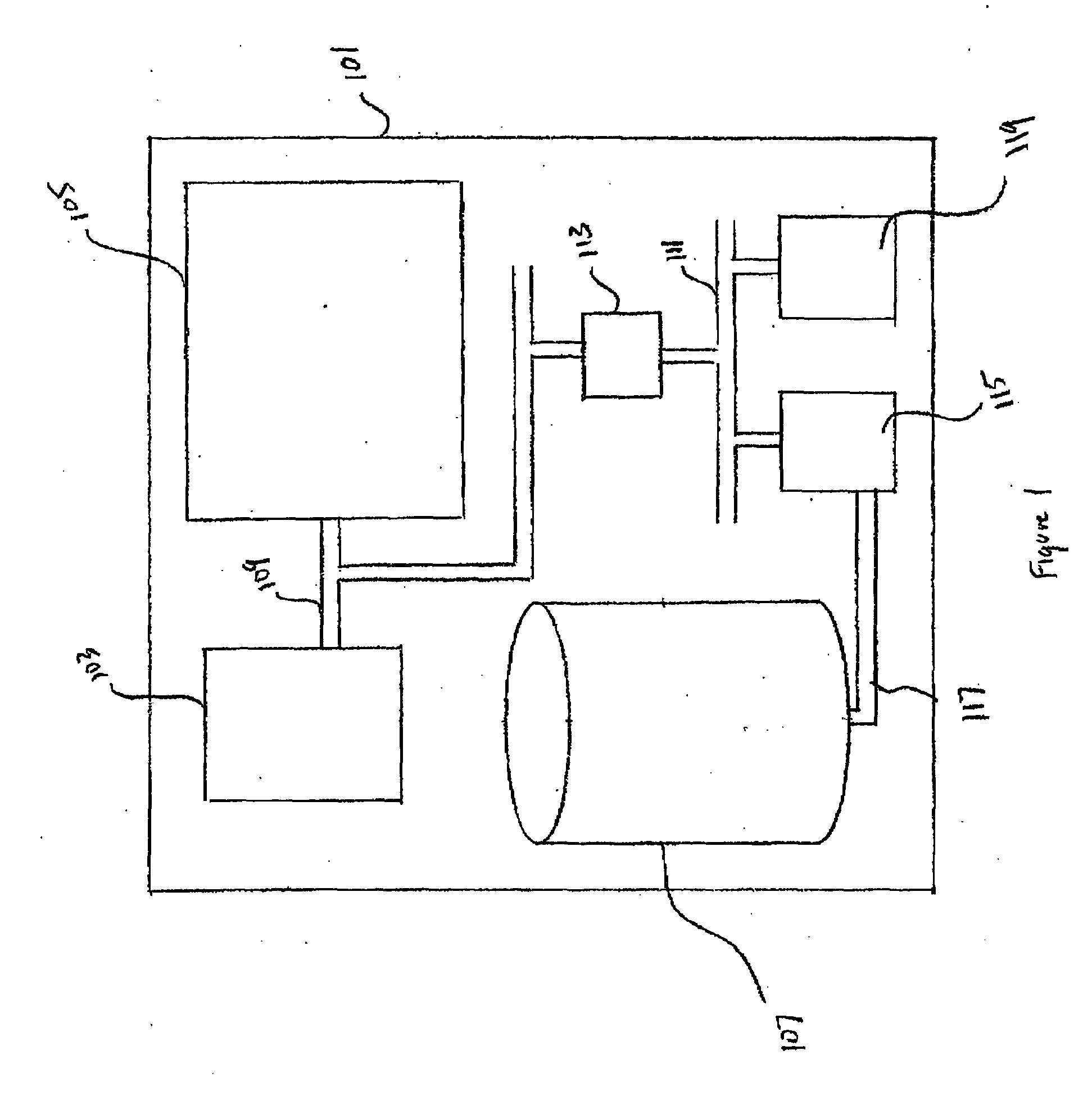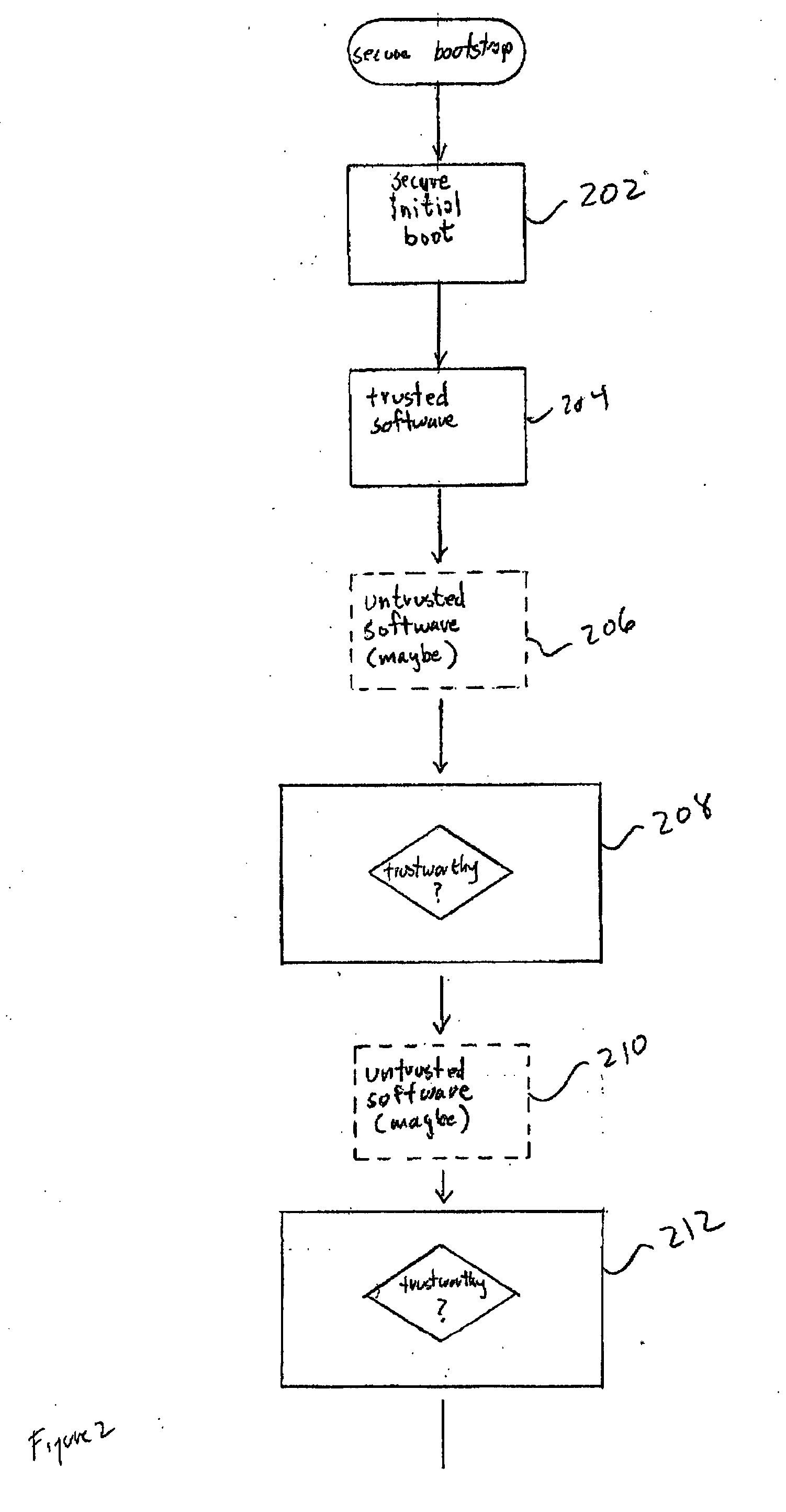Method and system for securing a computer system
a computer system and computer system technology, applied in the field of secure computing, can solve the problems of thwarting the carefully constructed chain of trust established by secure boot procedures, unable to properly execute security procedures on secure computer systems, and unable to guarantee the security of the computer system. the ability to access the secure data associated with a previous, more secure state is difficult or impossible to achiev
- Summary
- Abstract
- Description
- Claims
- Application Information
AI Technical Summary
Benefits of technology
Problems solved by technology
Method used
Image
Examples
Embodiment Construction
[0019] In one embodiment of the present invention, a new hardware element, a security-state-based data vault (“SSDV”), is introduced into the computer system, and interconnected via a bus or other communications medium and optionally via additional control signal lines, to securely store the current security state of the computer system and to store and provide access to data associated with specific security states. The new hardware element, called a security-state-based data vault (“SSDV”), in one embodiment provides to executing processes an ability to store the current security state of the computer system and to avoid exposing or using secured data at incompatible security levels. An executing process can then prevent itself from launching sensitive applications or exposing sensitive data within the computer system, depending on whether or not the computer system is currently in a security state compatible with the sensitive applications or data exposure.
[0020] The SSDV includ...
PUM
 Login to View More
Login to View More Abstract
Description
Claims
Application Information
 Login to View More
Login to View More - R&D
- Intellectual Property
- Life Sciences
- Materials
- Tech Scout
- Unparalleled Data Quality
- Higher Quality Content
- 60% Fewer Hallucinations
Browse by: Latest US Patents, China's latest patents, Technical Efficacy Thesaurus, Application Domain, Technology Topic, Popular Technical Reports.
© 2025 PatSnap. All rights reserved.Legal|Privacy policy|Modern Slavery Act Transparency Statement|Sitemap|About US| Contact US: help@patsnap.com



